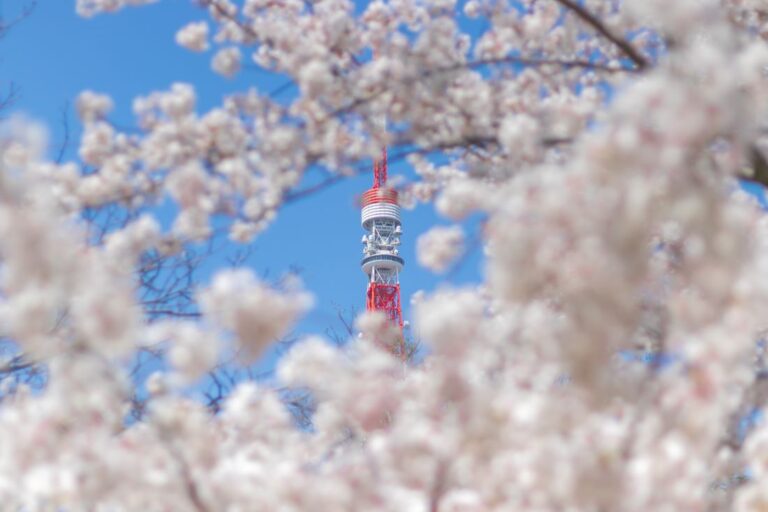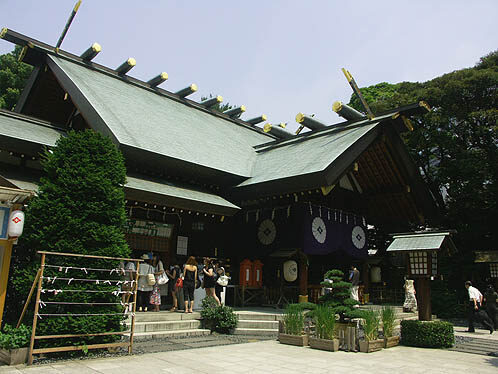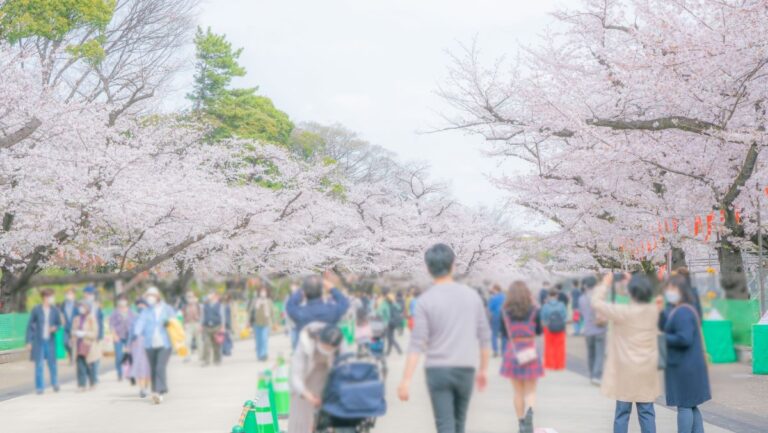Here are the best places to see the cherry blossom in Chiyoda
Kitanomaru Park
A national park adjacent to the Imperial Palace in Chiyoda Ward, this park is located between Kudan and the Imperial Palace, and has the Nippon Budokan on its grounds. In the 1950s, when many buildings such as the former Konoe Regiment were dispersed and the area was developed as a forest park, cherry trees were planted, and now there are approximately 300 cherry trees, mainly Someiyoshino.
Sotobori Park
The park along the 2.5 km-long causeway that runs from JR Iidabashi Station to the Yotsuya Station area in Chiyoda Ward is the Outer Moat Park, a remnant of the outer moat of Edo Castle. Large Someiyoshino cherry trees line the moat. The area around Yotsuya Station is ideal for cherry blossom viewing, as it is on the bank and has a space more than 5 meters wide.
National Theatre of Japan
The National Theatre of Japan is where you can see performances of Kabuki, Bunraku, and Noh, traditional Japanese performing arts, and is located on the north side of the National Diet Building in Chiyoda Ward. The National Theatre is said to be a hidden cherry blossom viewing spot in Chiyoda Ward, and the National Theatre Cherry Blossom Festival is held every year in the front yard of the National Theatre.
Hibiya Park
Hibiya Park was Japan’s first Western-style modern park, and celebrated its 100th anniversary in 2003. As it is called an oasis in the business district, the park has many fountains, including the “Grand Fountain,” the largest symbol of Hibiya Park, which provides a place of relaxation for people taking a rest nearby.
Jobanbashi Park
This is a small park located on the other side of the street in front of the Bank of Japan’s main office on Tokiwa-bashi Bridge between Otemachi, Chiyoda-ku, and Nihonbashi Hongokucho, Chuo-ku, Tokyo. The ruins of the Tokiwanbashi Gate, which served as the main entrance to Edo Castle, are protected as a historic site under the Law for the Protection of Cultural Properties, and a bronze statue of Eiichi Shibusawa, who devoted himself to this purpose, stands in this park.
East Gardens of the Imperial Palace
The East Gardens of the Imperial Palace are a 21-hectare garden centered on the Honmaru and Ninomaru areas of the former Edo Castle, located on the east side of the Imperial Palace in Chiyoda Ward. The East Gardens form a major cherry blossom planting area in the heart of the city, with a variety of cherry trees blooming in a spacious area within the grounds where many historic buildings are located.
Chidorigafuchi Park
This park was created along the moat on the west side of the Imperial Palace in Chiyoda-ku, and is also called Hanzomon Park because of its proximity to Hanzomon Gate. Approximately 170 cherry trees, including Someiyoshino and Yamazakura, are planted here, and visitors can enjoy the beauty of the pink cherry blossoms that contrast favorably with the deep green surface of the Hanzo moat and Chidorigafuchi.
Yasukuni Shrine
This park is built along the moat on the west side of the Imperial Palace in Chiyoda-ku, and is also called Hanzomon Park because of its proximity to Hanzomon Gate. About 170 cherry trees, including Someiyoshino and Yamazakura, are planted here, and you can enjoy the beauty of pink cherry blossoms that contrast favorably with the deep green surface of the Hanzo moat and Chidorigafuchi.
Chidorigafuchi Ryokudo
This 700-m-long promenade along Chidorigafuchi on the west side of the Imperial Palace in Chiyoda-ku, Tokyo, is said to be one of the best cherry blossom viewing spots in the city. Approximately 260 Someiyoshino cherry trees and Oshima cherry trees make the entire promenade a tunnel of cherry blossoms. The contrast of the cherry blossoms hanging over the surface of the Chidorigafuchi water provides a wonderful view with depth, and there are many great spots for taking pictures.






